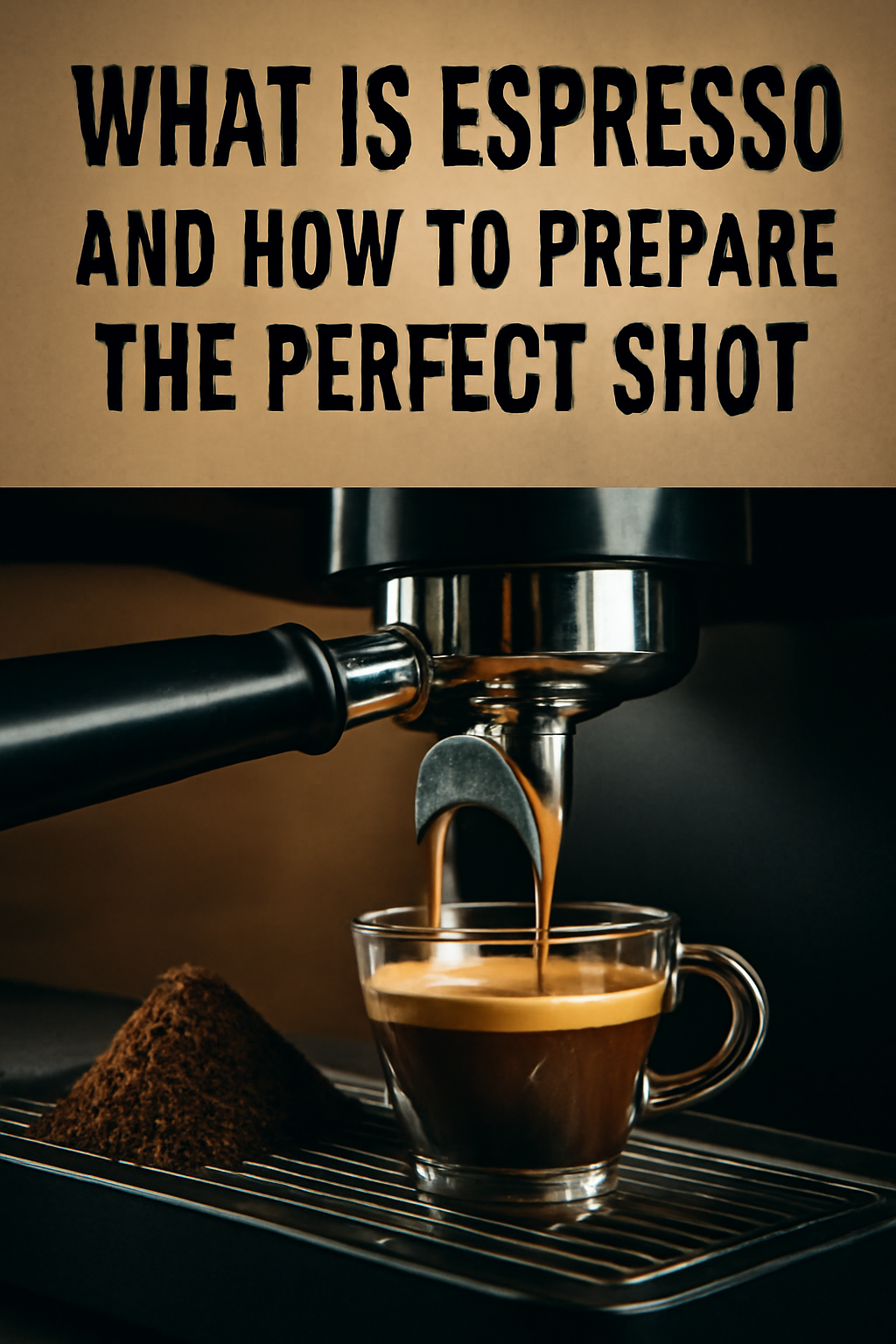Espresso is the foundation of many beloved coffee drinks and a cornerstone of coffee culture worldwide. Its rich, concentrated flavor and velvety crema make it a favorite among coffee enthusiasts and professionals alike. However, crafting the perfect espresso shot requires more than just pressing a button; it demands precise technique, understanding of variables, and quality equipment. In this guide, we’ll explore what espresso truly is, the science behind its preparation, and step-by-step instructions to help you achieve the perfect shot every time.
What Is Espresso?
Espresso is a coffee brewing method that forces hot water under high pressure through finely ground coffee. The result is a concentrated shot of coffee with a robust flavor and a layer of crema—a golden foam of emulsified oils that forms on top.
Originating in Italy in the early 20th century, espresso is not just a beverage but a technique that revolutionized how coffee is made and enjoyed. Unlike drip or pour-over coffee, espresso extracts flavors quickly and efficiently due to its pressure-driven process.
Espresso serves as the base for numerous drinks such as lattes, cappuccinos, macchiatos, and Americanos, making it a fundamental skill for baristas.
Understanding the Components of Espresso
A perfect espresso shot balances five key components:
- Crema: The creamy, golden layer on top that holds aromas and oils, indicating freshness and quality.
- Body: The texture or mouthfeel of the espresso; ideally, it should be rich and velvety.
- Flavor: The combined taste characteristics, including sweetness, acidity, bitterness, and any unique notes from the coffee origin.
- Aroma: The fragrance released from the shot, enhancing the drinking experience.
- Balance: The harmonious interplay of all components, creating a satisfying cup without overpowering bitterness or sourness.
The Science Behind Espresso Extraction
Espresso extraction involves forcing hot water, usually between 90°C and 96°C (194°F to 205°F), through a puck of compacted coffee grounds at around 9 bars of pressure. This process typically takes 25 to 30 seconds.
During extraction, water dissolves the coffee’s soluble compounds. The first phase releases aromatic oils and acids, contributing brightness and aroma. The middle phase delivers sweetness and body, while the final phase extracts bitter compounds. Pulling the shot too long causes over-extraction, leading to bitterness, while too short results in under-extraction and sourness.
Essential Equipment for Brewing Espresso
To prepare a perfect espresso, quality equipment is essential:
- Espresso Machine: A reliable machine that maintains consistent pressure and temperature is key. Machines range from manual to fully automatic, with semi-automatic being the most popular for balance of control and convenience.
- Coffee Grinder: Freshly ground coffee is critical. A burr grinder that allows precise adjustment of grind size ensures consistent extraction.
- Portafilter: Holds the coffee grounds during extraction. A clean, well-maintained portafilter ensures even water flow.
- Tamper: Compresses coffee grounds evenly, vital for consistent extraction.
- Scale and Timer: Precision tools for dosing coffee and timing extraction improve repeatability.
Step-by-Step Guide to Prepare the Perfect Espresso Shot
- Preheat the Machine and Equipment: Turn on your espresso machine and allow it to reach the optimal temperature. Preheat your portafilter by running hot water through it to maintain temperature stability.
- Grind the Coffee Beans: Use freshly roasted beans, ideally within two weeks of roasting. Grind to a fine consistency, similar to table salt. Adjust grind size based on your machine and coffee.
- Dose the Coffee: Measure the amount of coffee grounds—typically 18 to 20 grams for a double shot. Use a scale for accuracy.
- Distribute and Tamp: Evenly distribute coffee in the portafilter basket, then tamp firmly and evenly with about 30 pounds of pressure. A smooth, level puck promotes even extraction.
- Lock the Portafilter: Insert the portafilter into the machine’s group head securely.
- Start Extraction: Begin the shot and start the timer simultaneously. Aim for an extraction time of 25 to 30 seconds.
- Observe the Shot: Watch for a steady, thin stream with a rich, caramel color. The crema should be thick and golden.
- Stop the Shot: Once the desired volume (usually 30-40 ml for a double shot) or time is reached, stop the extraction.
- Serve Immediately: Espresso is best enjoyed fresh, as flavors and crema deteriorate quickly.
Troubleshooting Common Issues
- Under-Extraction: Sour, weak flavors, and pale crema usually indicate too coarse grind, insufficient dose, or too short extraction time. Adjust grind finer, increase dose, or extend extraction.
- Over-Extraction: Bitter, harsh flavors with dark, thin crema may be due to too fine grind, excessive dose, or too long extraction. Adjust grind coarser, reduce dose, or shorten extraction.
- Channeling: Water flowing unevenly through the puck causes poor extraction. Ensure even tamping and proper distribution of coffee grounds.
- Crema Quality: Thin or absent crema can indicate stale beans, low-quality coffee, or machine issues.
Tips for Perfecting Your Espresso
- Use fresh, high-quality specialty coffee beans.
- Regularly clean and maintain your espresso machine and grinder.
- Experiment with small adjustments in grind size, dose, and extraction time to dial in your shot.
- Practice consistent tamping technique.
- Keep detailed notes on your settings and outcomes to refine your process.
The Art of Enjoying Espresso
Espresso is not just a drink; it’s a sensory experience. Take time to savor the aroma, observe the crema, and appreciate the balance of flavors. Experiment with different beans and roasting levels to find your favorite profile.
Conclusion: Your Path to Espresso Mastery
Mastering espresso preparation takes practice, patience, and attention to detail. With the right equipment, quality beans, and a clear understanding of the extraction process, you can create the perfect shot that delights the senses and forms the basis of many exquisite coffee drinks.
Start your journey today by honing your technique, exploring different coffees, and enjoying the rich world of espresso.

